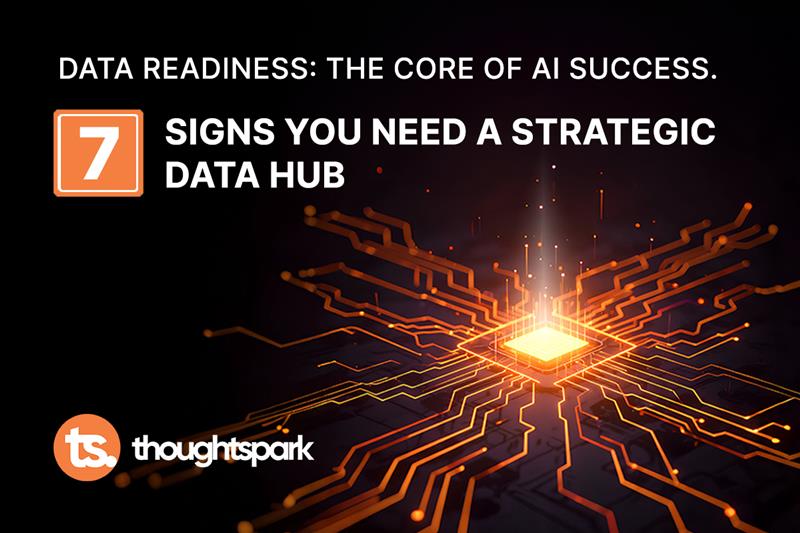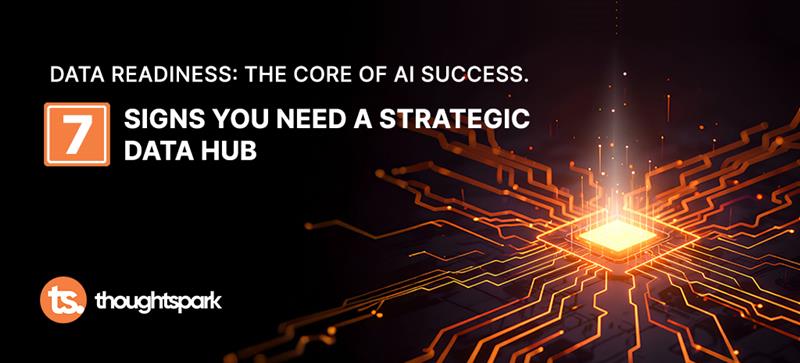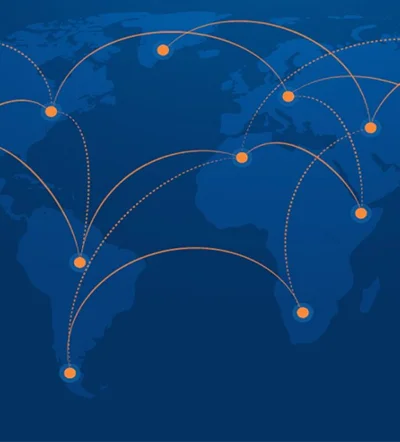

Table of Contents
- 1. Introduction
- 2. The Hidden Problem: Why Data Readiness Matters
- 3. What Is a Data Readiness Hub?
- 4. 7 Signs Your Company Needs a Data Readiness Hub ASAP
- Sign 1: Your AI Projects Keep Stalling
- Sign 2: Data Quality Issues Are Costing Millions
- Sign 3: Compliance Risks Are Rising
- Sign 4: Teams Waste Time on Manual Fixes
- Sign 5: Customer Experience Feels Fragmented
- Sign 6: You Can’t Scale Digital Transformation
- Sign 7: Competitors Are Outpacing You with Data-Driven Decisions
- 5. The Benefits of a Data Readiness Hub
- 6. Actionable Steps to Implement a Data Readiness Hub
- 7. Key Takeaways
- Conclusion
1. Introduction
In the world of B2B SaaS, data can be your greatest competitive advantage or your biggest liability.
You can’t drive AI innovation, deliver seamless customer experiences, or make confident decisions if your data is fragmented, inconsistent, or outdated.
That’s where a Data Readiness Hub comes in. At ThoughtSpark, we’ve seen firsthand how companies unlock exponential ROI when they stop patching data problems and start building a foundation for enterprise data readiness.
Did you know?
“Bad data costs the U.S. economy over $3 trillion a year.” – IBM
If your organization struggles with inaccurate insights or underperforming AI models, it might be time to rethink your data strategy.
2. The Hidden Problem: Why Data Readiness Matters
You’ve invested in AI, analytics, and digital transformation. But if your data isn’t accurate, consistent, and accessible, those investments will underperform.
Did you know?
According to Actian, business loses $15 million annually due to issues with data quality and governance.
Without readiness, your enterprise risks:
- Wasted AI investments
- Compliance fines
- Poor customer experiences
- Slower decision-making
3. What Is a Data Readiness Hub?
A Data Readiness Hub is a ecosystem that ensures your data is accurate, connected, and actionable across channels, platforms, and AI initiatives. It will ensure your data is
- Clean (free of duplicates and errors)
- Compliant (aligned with regulations like GDPR, HIPAA, CCPA)
- Connected (integrated across silos)
- Contextual (ready for AI, analytics, and operations)
Think of it as the control tower for your enterprise data.
4. 7 Signs Your Company Needs a Data Readiness Hub ASAP
Sign 1: Your AI Projects Keep Stalling
If your AI pilots fail to scale, it’s often because the data feeding them is incomplete or inconsistent.
Sign 2: Data Quality Issues Are Costing Millions
IBM estimates that poor data quality costs the U.S. economy $3.1 trillion annually. If your teams spend more time fixing data than using it, you’re bleeding money.
Sign 3: Compliance Risks Are Rising
With regulations tightening, non-compliance fines can cripple growth. A readiness hub ensures audit-ready data.
Sign 4: Teams Waste Time on Manual Fixes
If analysts spend 60% of their time cleaning spreadsheets, you’re losing productivity.
Sign 5: Customer Experience Feels Fragmented
Disconnected data leads to inconsistent customer journeys. A readiness hub unifies customer profiles.
Sign 6: You Can’t Scale Digital Transformation
Digital initiatives collapse without reliable data foundations.
Sign 7: Competitors Are Outpacing You with Data-Driven Decisions
If rivals are faster to market, chances are they’ve solved their data readiness problem.
5. The Benefits of a Data Readiness Hub
Here’s what enterprises gain:
| Benefit | Business Impact |
| Improved Data Quality | Reduced costs, faster insights |
| Compliance Assurance | Lower regulatory risk |
| Unified Customer View | Better CX, higher retention |
| AI & Analytics Enablement | Faster innovation |
| Operational Efficiency | Less manual work, more automation |
6. Actionable Steps to Implement a Data Readiness Hub
Implementing a Data Readiness Hub doesn’t have to be overwhelming. Follow these practical steps to ensure success:
1. Assess Your Current Data Landscape
- Identify all data sources across departments.
- Check for duplicate, inconsistent, or incomplete data.
- Map data silos and evaluate current data quality.
2. Define Business Objectives
- Clarify what your company wants to achieve (e.g., AI readiness, faster analytics, improved customer experience).
- Set measurable goals for the Data Readiness Hub.
3. Choose the Right Platform
- Select a hub that integrates with your existing systems (CRM, ERP, BI tools, AI platforms).
- Ensure it supports automation, governance, and scalability.
4. Pilot the Hub in a Single Department
- Start small to validate the platform.
- Track improvements in data quality, processing speed, and business insights.
- Collect feedback from users for refinements.
5. Standardize Data Governance
- Define rules for data quality, access, and security.
- Automate compliance and monitoring where possible.
- Document best practices to ensure consistency across teams.
6. Scale Across the Organization
- Roll out the hub to all departments.
- Ensure training, onboarding, and change management support.
- Continuously monitor performance, data quality, and ROI.
7. Measure and Optimize
- Track KPIs such as data accuracy, analytics speed, and cost savings.
- Refine processes and workflows based on insights.
- Use outcomes to continuously improve data readiness and business decisions.
7. Key Takeaways
- Data readiness drives better decisions: Reliable data is the foundation for AI, analytics, and business strategy.
- A Data Readiness Hub centralizes and cleans data: It removes silos, ensures accuracy, and makes data actionable.
- Improved efficiency and ROI: Companies report faster reporting cycles, reduced manual effort, and measurable financial gains.
- Supports AI and digital transformation: Clean, unified data accelerates AI adoption and digital initiatives.
- Scalable and future-proof: A hub grows with your organization, ensuring consistent data quality as operations expand.
Conclusion
Your competitors aren’t waiting. They’re already leveraging enterprise data readiness to accelerate AI, improve customer experience, and reduce compliance risk.
It’s time to stop patching data problems and start building a Data Readiness Hub.
Ready to future-proof your enterprise?
Book a Data Readiness Assessment with ThoughtSpark today.
